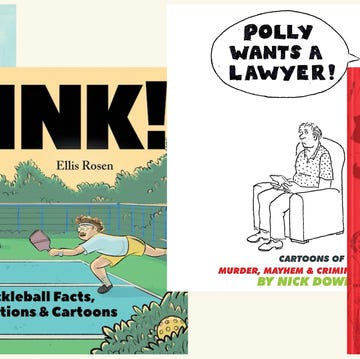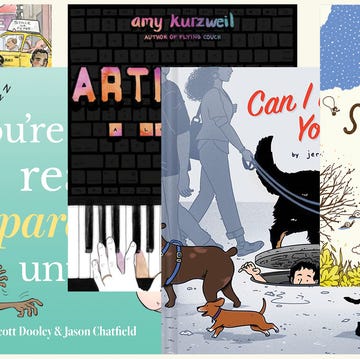There are two types of memoir writers: those who want to correct the record and those who want to tell a story. Lynn Hershman Leeson falls into the former category.
In Private I: A Memoir, Leeson does not set out to rewrite her own life (though, to be certain, she does) but rather to annotate a collective history—of California conceptual art of the 1960s through the early aughts—with proof of female participation. The book serves as validation of Leeson’s body of work—and the numerous contributions she made to projects of male artists that went uncredited—as well as the enduring careers of her colleagues, including Eleanor Coppola and Carolee Schneemann.
Private I is a diary, an addendum, a manifesto—but perhaps most of all, the memoir is another art piece by Leeson, a hyper-generative artist who has long mainlined her lived experience into her work.
From the start, Leeson, now 84, tells the reader that she’s searching: “What is the MacGuffin of my life? I am writing this memoir to find out.” A possible answer appears a few chapters later when a young Leeson, then living in Ohio, gets a drawing stuck in the junior high Xerox machine. Her drawing, a rendering of a Leonardo da Vinci painting, is mangled by the copier. After Leeson dries her eyes, she takes another look: “The fragile, hand-rendered human body I had drawn became vibrantly alive. In this iteration, the machine was neither enemy nor devil. It was a co-conspirator.”
Leeson’s early interest in machines strongly influences her work. In 1970, after undergoing a near-fatal pregnancy that required her to be hooked up to a ventilator for weeks, she was set to exhibit her Breathing Machines series—wax casts of the artist’s face that incorporated audio of her respiration—at the Berkeley Art Museum. On opening day, though, Leeson entered the gallery to find the room empty; the chief curator had removed her work. “It was not art,” she was told. This exhibition was one of many art-world slights that Leeson recounts in the book—though she’s honest about how her own actions may have contributed to her sidelining: “Perhaps it was karma. For over three decades I enabled other artists to complete their works.… My own work was rarely acknowledged or exhibited, and often ignored, or worse, reviled.” Projects that Leeson “enabled” include Christo and Jeanne-Claude’s Running Fence (1972–76), a 24.5-mile-long fence running along Marin and Sonoma Counties that trailed into the Pacific, for which she acted as associate project manager. Leeson also felt disconnected from the burgeoning West Coast feminist art scene—pioneered by Judy Chicago and Miriam Schapiro, founders of the Feminist Art Program at Fresno State College. “I felt too restricted trying to make work that fit into a particular formula that Judy Chicago dictated,” she said in a recent interview with Alta Journal. “I had to make my work despite the environment.”
In 1972, Leeson introduced Roberta Breitmore, one of several alter egos the artist used in her work. As Roberta, Leeson participated in everyday activities—renting an apartment, seeing a psychiatrist, joining a WeightWatchers diet program—in a creative exploration of identity politics. Inspired by a Joyce Carol Oates short story, Roberta was an amalgamation of beauty ideals and stereotypes: blond, clumsy, and wearing heavy makeup. “Clothing, checks, credit cards, driver’s license, psychiatric reports, diary entries, letters, tape recordings—all became the archived remains of her artificial life. Roberta’s detritus allowed viewers to become voyeurs to her history,” Leeson writes. She hired professional surveillance photographers to track Roberta’s movements, thus mounting evidence of the character’s existence and articulating the contours of her life. “Surveillance is an extension of what you create as possibilities,” Leeson recalled during our conversation.
Though the memoir is perhaps Leeson’s most deliberate attempt to scratch her own name into history, it’s hardly her first. In 1970, frustrated by how few critics were interested in covering female artists, Leeson developed three pen names under which she published criticism for national and local publications. There was Prudence Juris (who wrote for Studio International and Artweek), Herbert Goode, and Gay Abandon. Though each writer had their own voice, all three were concerned with the visibility of female artists—especially Leeson. “Mentions of my own work in these critics’ articles were instrumental in my being added to the roster of Paule Anglim in San Francisco, which was one of the few woman-owned galleries,” Leeson writes in Private I. “Was my strategy of fictional critics ethical? What are the implications of a culture that celebrates gender exclusion? Does existing bias justify these fictive tactics? Yes!” Still, despite Leeson’s efforts to achieve parity, she was concerned with generalizations: “It was easy for people to throw me into the bucket with women artists,” she told Alta. Leeson’s ultimate pursuit, she said, was creating an authentic art form.
For young artists, Private I is encouragement: Despite financial struggles and depressive periods, Leeson has constantly made art. Her archive is massive: By 2007, her work—including two sound sculptures (Agent Ruby and Lorna) widely considered to be among the first multimedia artworks and interviews with over 70 female artists (including Suzanne Lacy and the Guerrilla Girls)—occupied hundreds of file boxes. However, Leeson never describes a moment of “making it” in the art world. In fact, the difficulties are ongoing: “And today, despite much recognition, I still struggle to sell my work,” she writes. It’s a refreshing, yet painful, revelation.
Private I is Leeson’s testimony, and it’s also crucial work: documentation of a watershed period in feminist art history and proof of Leeson as the consummate futurist interested in nascent technology, as well as the posterity of physical objects, cultural movements, and a generation of female artists.•
Lydia Horne is the research director at Alta Journal. Her writing has appeared in Wired, Racquet Magazine, L.A. Taco, Hyperallergic, and other publications.














